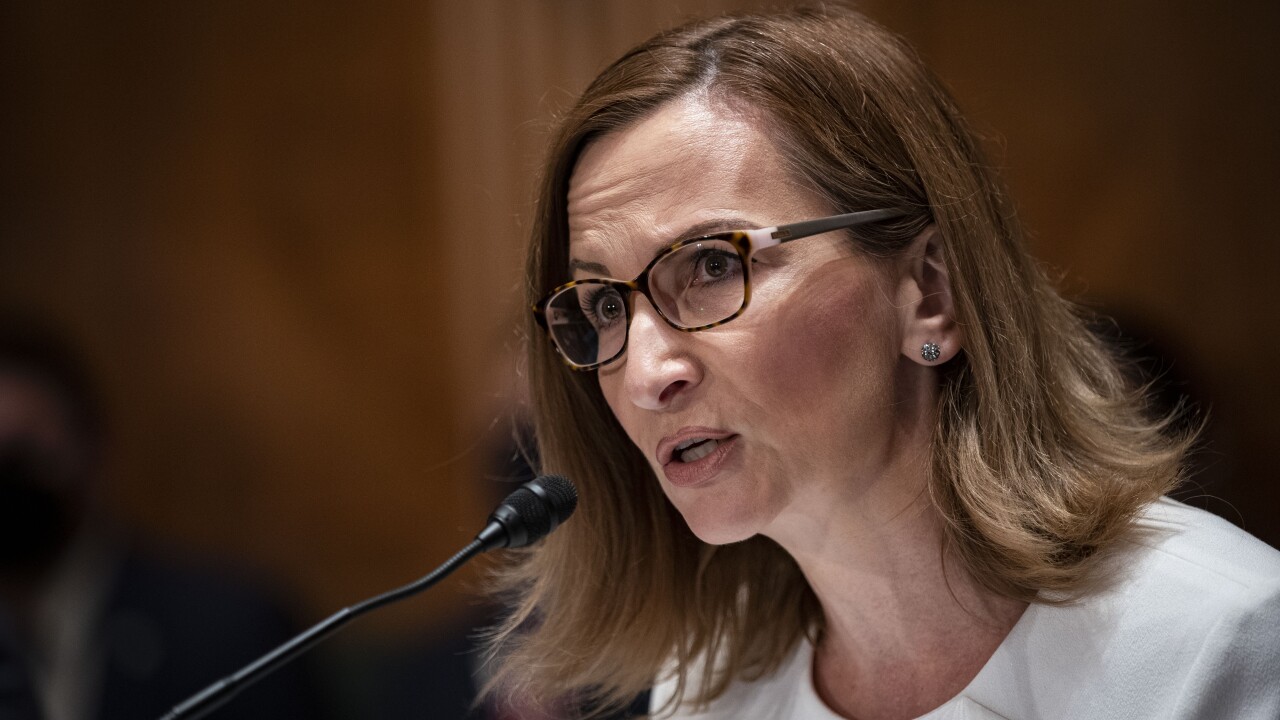To grow its Zip contactless payment platform, Discover Network has in place the chip orders, the merchant acquirer programs, terminal hardware deals and, of course, the user base.
There's only one thing missing: the cards. Discover has issued none to date, and instead is testing the waters for prospective mobile phone payments technology on the Near Field Communications (NFC) open standard.
Meanwhile, Washington Mutual went headlong this March with plans to issue to its customers 12 to 15 million contactless debit cards that will work on the widespread MasterCard PayPass platform. With that many in circulation, Wamu can lay claim to being the largest U.S. issuer of contactless cards, ahead of JPMorgan Chase and the 10 million-plus "blink" RFID-enabled cards it's issued since 2005.
Barclaycard US is also branching out into chip-embedded issuance, but is choosing to go through domestic retailer channels — not banks — for private-label and co-branded contactless card programs. Barclaycard recently hitched up with BJ's WholeSale Club for a BJ's-branded Visa card that transacts through Visa's payWave system.
All these strategies adopted by major issuers and banks to stir participation in contactless payment formats are as varied as they are risky. Chip-embedded cards are more costly than normal mag-stripe plastic to issue, and despite advanced encryption techniques, users' security concerns are still predominant: 65 percent, fairly or not, believe the cards aren't safe, according to Javelin Strategy & Research. And even with 24.8 million chip-embedded credit cards issued in the U.S., their use is primarily limited to gas-n-go convenience stores and fast food joints.
"What's clear is that we're not at critical mass yet," says JupiterResearch senior analyst Ed Kountz. "If we look at the number of consumers who say they don't know what contactless is — 33 percent of respondents — that shows there's still a fairly great educational effort that needs to go into it." Even among 25- to 34-year-old tech lovers, once a week usage did not reach 10 percent in 2007, according to Jupiter.
The future is uncertain. The number of consumers adopting contactless could reach 57 million by 2013 when NFC rollouts are projected to arrive, according to Javelin. But that number could stagnate without building more usage and acceptance. For all the attention heaped on NFC to date there have only been eight U.S. trials of the technology relegated to sports events, limited audiences (including employee-only) and for transit payments. Banks and issuers understand contactless must broaden beyond its narrow micropay niches to build usage, ramp up acceptance and pave the way for widespread wireless proximity payment usage, a la Japan where the number of contactless devices, including phones and cards, is approaching 100 million.
Building acceptance and common usage will take major investments by merchants and carriers who have yet to see compelling business models to justify ROI. "Until there's 100 percent acceptance with merchants, you're always going to be fighting an uphill battle," says Javelin president James Van Dyke.
Contactless industry sources will tell you 80,000 merchants with 400,000 multi-platform contactless terminals is progress, but it's a drop in the bucket in both the payments and retail universes. There are already failed experiments—most notably American Express' decision to quit supporting non-card contactless fob devices. According to a report authored by Javelin senior analyst Bruce Cundiff, contactless programs to this point have been spurred mostly by card network subsidies and progress in micro-pay outlets. That's not enough to be the "catalyst" to mobile payments, he says.
One of the bitter pills that the card associations and banks may have to swallow is the promotion of contactless private-label and closed-loop gift-card programs — an admittedly counter-intuitive move that could diminish network credit card usage.
"That is where to break that logjam," says Cundiff. "Visa and MasterCard, they have their own prepaid issuance, and processing platforms as well. They have the capabilities, and it would not be an altogether altruistic action on their part…they have the most vested interest in making this happen."
That makes chip-stored loyalty programs perhaps a powerful incentive to lure in merchants. France-based Inside Contactless, which designs and sells contactless chips for NFC devices and cards, is looking into loyalty and points programs resident on cards or mobile devices. "We've done some outreach to retailers in a few segments," says Charles Walton, evp of sales and marketing at Inside. "In some segments there was interest with the notion of a contactless card. But they began to see doing something more broadly, including a loyalty program."
Some new categories of retailers are starting to enter the picture, such as big-box Best Buy's POS contactless terminals. Consumers are prodded into contactless use through rewards programs, as well as tangible convenience in trial programs like the Western Union/Sprint Nextel trial in San Francisco for NFC-equipped Samsung phones that provide transit fare payments on Bay Area Rapid Transit (BART).
As evidenced in the BART trial, another concern for banks and issuers is disintermediation. There are other players—processors like First Data or even alternative payment outlets like PayPal — who might reach out to stores if banks/issuers don't.
Regardless of who leads the merchant/carrier courtship, Kountz believes that the market model for all contactless participants needs proactive decision makers to steer its course. "I think at this point and time, the business model has not been resolved," he says. Discussions at May's CTST security conference showed "progress is being made... but not something that will be automatically resolved short–term, within the next year and year and a half." That gives banks some time, but still few seem able or willing to discuss expansion strategies.
Mike Kutsch, JPM Card Services' first vp of growth strategy, says he is not aware of any private-label initiatives for blink, but agreed the key issue for contactless, including for mobile migration, "is getting all the players to agree to the business relationships longer term."
But Kutsch doesn't see it as a potential game-ender. "The concept of whether or not certain changes in the business model are needed in order to move contactless forward from a mobile commerce standpoint, I'm a little hesitant to go that far," says Kutsch. "We've got a very established structure today that works well." For adoption growth, there will need to be some additional "value-add" that's created for the players in the space, Kutsch adds. "Whether that takes form in rewards or other elements, I can't comment on it."
Discover is also mum on its plans. Leslie Beyer, a Discover Network spokeswoman, says "We believe there is a lot of promise in mobile payments, but we are waiting to see what merchants want. If the market dictates that plastics are the way to go, we are ready.





